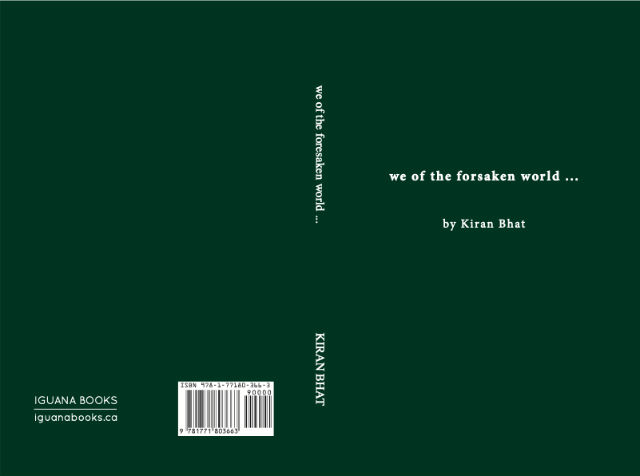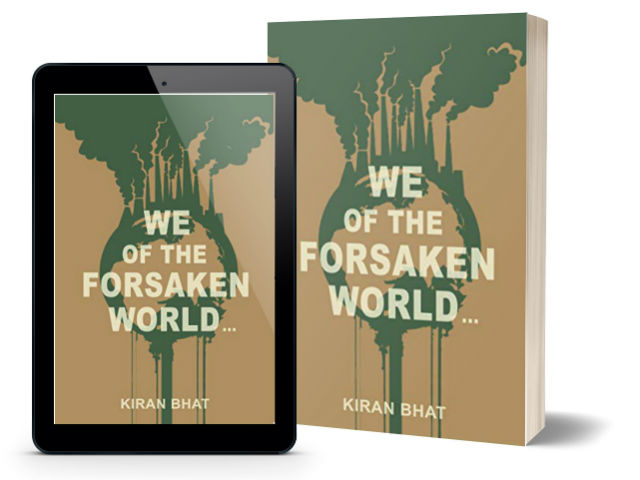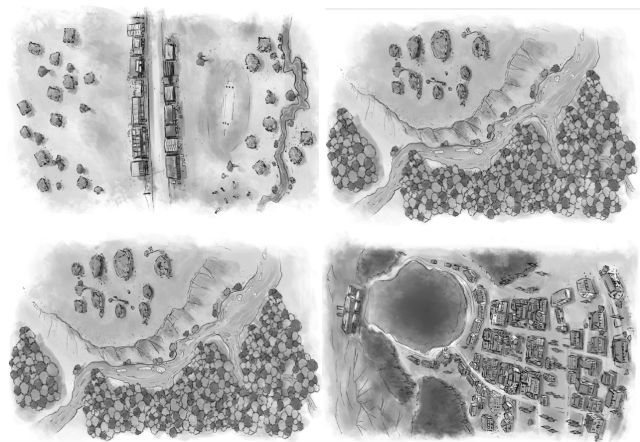One of the greatest joys for us at Team Thinkerviews is connecting to authors from around the world as they share their thoughts and worlds with us. We were approached by author Kiran Bhat who is a global citizen with extensive travel and living experiences from around the world. He is someone who reads extensively in almost a dozen languages and has also been writing poetry and stories in different languages.
| Book Title | : | We Of The Forsaken World… |
| Author | : | Kiran Bhat |
| Publisher | : | Iguana Books (22 January 2020) |
| # of Pages | : |
177164(Paperback) 12753 KB; 177 (Kindle EBook) |
| # of Chapters | : | – |
| Purchase Link(s) | : |
His first work of fiction written in English is called We of the Forsaken World (published by Iguana). The author provided us a copy for an unbiased review of the same and we are very happy to share our thoughts on it here…
This Is Here In For You
Cover page
Here is the cover page of the early version of the book.

We of the Forsaken World by Kiran Bhat | Book Cover
A very minimalistic black and white cover that only carries the book title and author’s name on the front, leaving the reader to imagine what the content of the books are going to be like. The cover page gives an impression of a serious book and we thought it would be interesting to see if the author brings any of his sketches from inside the book on forefront in future editions.
We looked at the later versions and found this updated version of the cover page :). This now shows a world that is bulging with human creations that have overpowered the natural balance…

We of the Forsaken World by Kiran Bhat | Book Cover
The Book and My thoughts on it
Let me first say that I loved the introduction to the book. The author talks about how our connectivity to billions of other souls on the planet through digital means should lead in generating more awareness inside us towards the cosmic consciousness. I recommend that every reader who picks up this book should read the introduction.
There is no traditional story format here. Instead the author creates four distinct stages for his characters and even gives us sketches to show his locales:
- THE TRIBE OF THE SILT
- A GLOBAL VILLAGE
- THE LAKE OF THE SACRED SALT
- BLACK CITY

Maps of different areas – as shown in the book
As the author talks to us about the events past and present in these places, you start to recognise the characters and the patterns, especially the change that takes us all in its stride as we make our weary way through day-to-day lives until disasters strike – whether in form of a poisonous gas cloud or tribal wars. Human weaknesses have a way to manifest in each and every set-up. There are some sections here on how women fare through societies old and young, so called orthodox and modern and the way they suffer is tragically unchanging although the narrators are living in places that could be worlds apart.
All our blind ambitions and actions that have ravaged the planet as we have destroyed natural habitats and built industrial empires have just shifted the problem from one place to another. The inherent weaknesses of human nature and our limitations are still very much there whether you are living in a tribal or a global village. Have we then reached the place where our world has nowhere to go? It is a forsaken place by even its inhabitants with no direction or desire to preserve any modicum of peace, beauty, elegance?
The author highlights a lot of ugliness that has become part of our daily lives over thousands of years and never seems to really go away – our hatred for things that are different, our callous disregard for calamities that do not touch us, our deep rooted prejudices and notions of inequality and the overall futility of it all:
There are billions of stars in the sky, like there are billions of us. We populate, we build great empires, the empires fall, the populations die out, but we start over, all in the vain belief we’re working towards something greater. Well, what if there isn’t really something greater? What if this is what we really are, like ants? How can we believe we are meant to reach the stars?
As we move from narrative to narrative, there are poetic segments that act as bridges that blend the lives of people in the different set-ups and take us from one world to another. The book is filled with many interesting observations and thought provoking lines highlighting the connectivity of life and the world as humans see it:
All art aspires to capture the aesthetic consequences of a particular period and set it in stone for the generations to come…
The world around us is constantly changing, but the purpose of life does not waver…
The likeness between fathers and sons trickles through the face not by the bonds of blood, but through the passage of time…
The author shares strong examples of how modern communication devices are exposing our young to a lot more violence and pornography than previous generations and how the extreme emphasis on one’s appearance, of presenting an acceptable image to other people can lead to disastrous consequences. There are many young characters here, the young son of the tribal chief with weight of prophesy, the young girl with no parents who is driven to suicide, the pair of young sisters who live lives worse than deaths. And then there are phone-obssessed young boys and girls with their insecurities as well as their unrealistic understanding of the world, as highlighted through multiple threads.
Remember that when one is — how to say — insecure, curt, and self-conscious, all at once, it is easier to hide in the company of others. A wolf in a pack appears more daunting than one, especially when one is hunting a bear.
One of the recurring themes in this book is about exploration of self even when stumbling through the conflicting maze of the world made of adults around you that at times appear to suffocate the children rather than educate them to become their true selves. Because you can live with everything else life throws at you once you embrace the limitations of your nature:
There was a reason why philosophers preached self-love over all else, because if we accept our own body or mind, no matter their condition, on the day when the clock reverts to zero, and our bodies become dust, we will be at the right place.
Summary:
As you can see above, the book is filled with a lot of hard truths, realistic and intriguing events and concepts and is a good choice for readers looking for something different and challenging. This is not a book for readers who are looking for an entertaining story that will act as an escape for a few hours…
ThinkerViews Rating:
Around 7.5 out of 10.
Quick Purchase Links:
- Buy – We Of The Forsaken World… By Kiran Bhat – Hardcover – Amazon India
- Buy – We Of The Forsaken World… By Kiran Bhat – Kindle Ebook – Amazon India
- Buy – We Of The Forsaken World… By Kiran Bhat – Paperback – Amazon US
- Buy – We Of The Forsaken World… By Kiran Bhat – Kindle Ebook – Amazon US
Over To You:
If you already have read the book do share your remarks and thoughts via comments below. Does this review help you in making your decision to buy or read the book? Do not forget to share this article with your friends over various social networks via Twitter, Facebook and others. And yes, you may like to subscribe to our RSS feeds and follow us on various Social networks to get latest updates for the site to land right in your mail box.
 ThinkerViews – Views And Reviews Personal views and reviews for books, magazines, tv serials, movies, websites, technical stuff and more.
ThinkerViews – Views And Reviews Personal views and reviews for books, magazines, tv serials, movies, websites, technical stuff and more.



